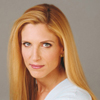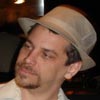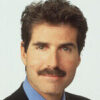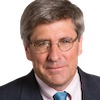
May 15, 2024
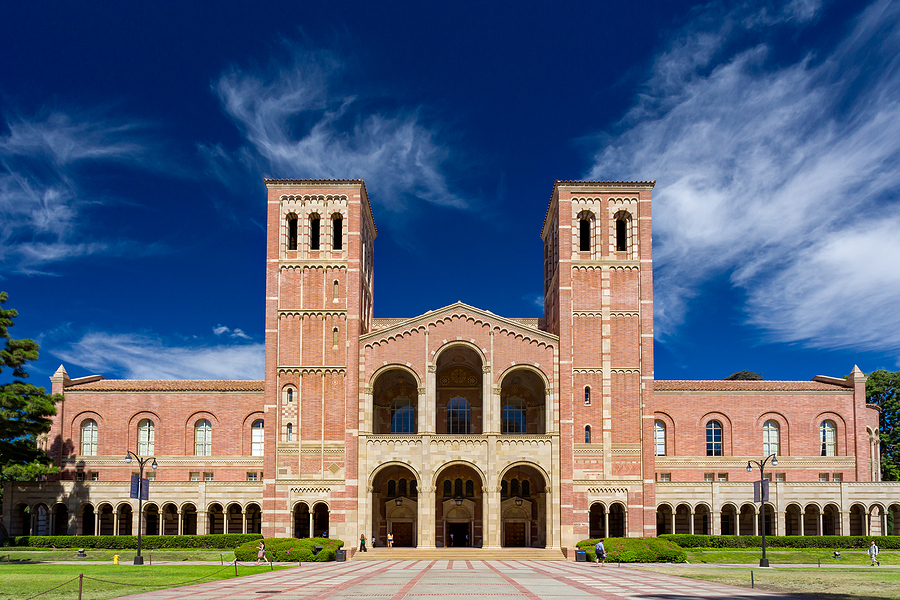
Royce Hall, UCLA
Source: Bigstock
In the most violent episode so far in the vastly publicized campus protests against Israel’s war on Gaza, at the end of April a goon squad of nationalist whites attacked the encampment of diverse UCLA students, while police stood back and let the militia whale on the pro-Palestinian demonstrators for a few hours. Finally, the cops got between the protesters and the attacking counterprotesters, then let the instigators go. The next night the police dismantled the encampment and arrested over 200 anti-Israel activists.
In an era when the Establishment obsesses over right-wing violence—last year, for example, President Biden declared, “White supremacy…is the single most dangerous terrorist threat in our homeland”—one might think that the brawl at UCLA would by now be almost as exhaustively reported as January 6th or Charlottesville. But instead, you have to read news accounts closely to even guess who the hard men at UCLA were.
Perhaps, though, I’m just prejudiced in thinking that the Battle of UCLA was a big deal. I live about twelve miles north of UCLA, I’ve rooted for the Bruins since the 1965 USC-UCLA football game, I earned an MBA at UCLA in 1982, and I visit it for doctors’ appointments.
“So, who were the UCLA attackers?”
So UCLA plays a sizable role in my life. But then, it does in many people’s lives: It receives, for example, more undergraduate applications than any other college in America. In this century UCLA has pulled ahead of its immensely famous older sister college in Berkeley on a number of metrics. In the current U.S. News & World Report rankings, UCLA and Berkeley are tied as the top public undergrad colleges. It’s thus not utterly unreasonable to assert that UCLA is now America’s leading public university.
And this is not to say that UCLA’s midnight brouhaha was particularly vicious. Despite all the front-page headlines devoted to this spring’s turf wars over the encampments, American college students in the 2020s are more fragile than ferocious. That a crowd of 30-something brawlers showed up at UCLA and kicked around the pro-Palestinian demonstrators is striking mostly by the feminized standards of Great Awokening campus activism, which has largely consisted of demanding that the authorities silence honest intellectuals for hurting their feelings.
Still, if the right-wing mob had been wearing Make America Great Again baseball caps, shouting “Christ is King,” and singing Russian songs about crushing Ukrainians, the struggle on the UCLA quad would be the biggest news story of the year.
Indeed, The New York Times and Washington Post have published lengthy investigative pieces demonstrating conclusively that outside agitators instigated the night of violence in front of UCLA’s Royce Hall.
Yet, both newspapers have been extremely reticent about the key question: Who were these far-right thugs?
The two legacy media institutions made only the most subtle attempts to communicate the first of the Five Ws of Journalism (Who, What, Where, When, and Why) to their delicate subscribers.
Thus, if you read all the way to the 28th paragraph in the Post’s report, you are finally given a few terse clues:
By the evening, a large crowd had gathered outside the protest camp. One man was draped in an Israeli flag and others wore hoodies with slogans demanding the return of Israeli hostages kidnapped by Hamas. At 10:48 p.m., counterprotesters moved closer to the encampment’s southern barricades and blared “Harbu Darbu”—an Israeli wartime anthem calling for retribution for Oct. 7. Suddenly, they rushed forward and started pulling metal fences away from security guards stationed at the perimeter of the encampment.
The New York Times was slightly more up-front about hinting who the rioters were in merely its ninth paragraph, although not until first prudently denying that it had any idea:
It is not clear how the counterprotest was organized or what allegiances people committing the violence had. The videos show many of the counterprotesters were wearing pro-Israel slogans on their clothing. Some counterprotesters blared music, including Israel’s national anthem, a Hebrew children’s song, and “Harbu Darbu,” an Israeli song about the Israel Defense Forces’ campaign in Gaza.
The Hebrew children’s song is presumably the one that the IDF uses to torture Palestinian prisoners by playing for eight hours straight.
Personally, I confess to not being up to date on Israeli drill music, but it appears that “Harbu Darbu” is a rap song in Hebrew written in the wake of October 7th that reached No. 1 on the Israeli charts. A rough translation of the opening:
A bunch of fucker rats getting out of the tunnel
Acting like thugs you idiots I swear there will be no forgiveness
Who do you think you’re coming here to yell “Palestine for free” at?!
Ptui, you sons of Amalek!
Hop, Bomb Squad!
Left right left, how the whole country is in uniform from the Galilee to Eilat
Fighters, Duvdevan and Magav, Qaraqal, Bardelas
We’ve brought the whole army and I swear there will be no forgiveness
The song ends with what sounds like a call for the Israel Defense Forces to murder several pretty female celebrities in the West who are outspokenly pro-Palestinian:
(Mekha)bella Hadid, Dua Lipa, Mia Khalifa
Every dog gets what he deserves in the end
All IDF units are coming to do Harbu Darbu on their head
So, who were the UCLA attackers?
The answer seems obvious, but one the press has been reluctant to spell out explicitly: As far as I can tell, the bruisers were largely Israelis, Israeli-Americans, and other Jews.
That shouldn’t come as a huge surprise to anybody living near UCLA. According to a 2015 estimate by the Israeli-American Council, more than 250,000 Israelis live in Los Angeles, with UCLA being roughly the geographic center of the main concentrations in the Westside and the San Fernando Valley. As I explained in Taki’s Magazine in 2015, UCLA student body politics is now largely a war between pro-Palestinian nonwhites versus Israelis and other Jews, with Israeli zillionaire Adam Milstein funding the Jewish campaigns for student body president.
Israeli immigrants in Los Angeles tend to be more blue-collar and less genteel than Ellis Island-descended Jewish-Americans.
Interestingly, Israeli new arrivals tend to gravitate toward those trades, such as locksmith, where they might conceivably stumble upon some intelligence that, they hope, Mossad might someday find useful. This is not to assert that Israeli spy services conspire to plant James Bond-like secret agents in low-level trades overseas. Perhaps instead, Israeli Jews abroad, who tend to be staunchly patriotic, might be on the lookout for ways to bring themselves to the grateful attention of the Israeli intelligence community.
This might help explain otherwise puzzling stories such as the dancing Israelis on 9/11 who were working as movers in an Arab neighborhood in New Jersey. And then there’s the well-documented but still mysterious phenomenon of “Israeli art students” swarming into American office buildings and grabbing random papers off desks, as happened at the marketing research firm where I worked in Chicago in the late 20th century.
These unpromising-sounding ventures don’t strike me as likely high-level plots masterminded by Unit 504, but more like the career daydreams of young Israeli working men abroad. Imagine:
Israeli Spymaster: Lior, the Prime Minister has declared it the homeland’s top priority to find a Los Angeles locksmith with copies of Mel Gibson’s house keys. Can you serve your country in its time of need?
Lior the Locksmith: Yes! Mel is one of my best clients. I also have the keys of Zendaya and Shohei Ohtani.
Spymaster: [Stares blankly at Lior]
Lior: In case you someday need their keys as well, for a, you know, black bag operation.
Spymaster: Excellent thinking! Indeed, national security might someday require us to access this Zhentani person’s house. By the way, next time you are in Jerusalem, come see me about a permanent job.
But then again, who really wants to know much about Israeli influence in America?
